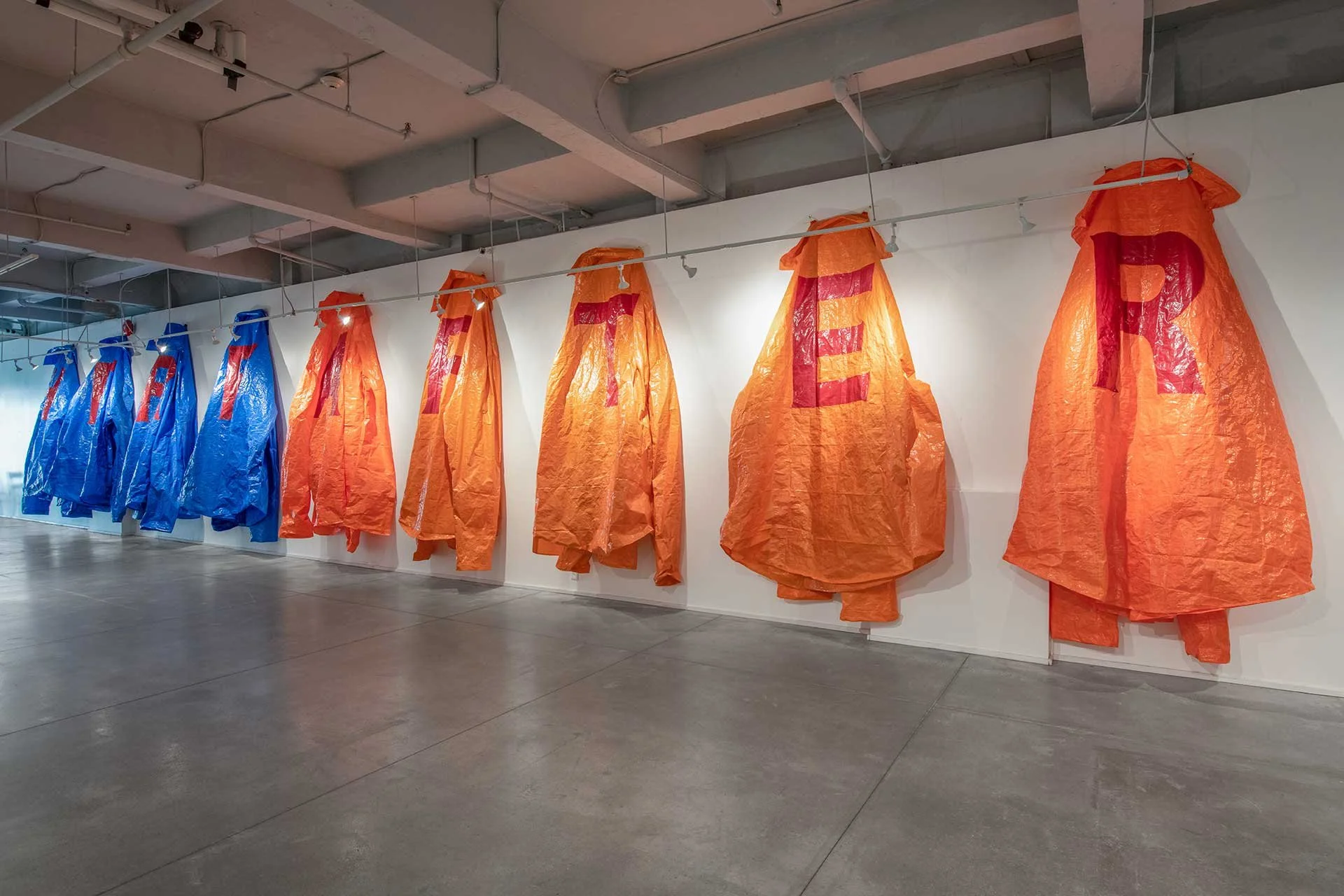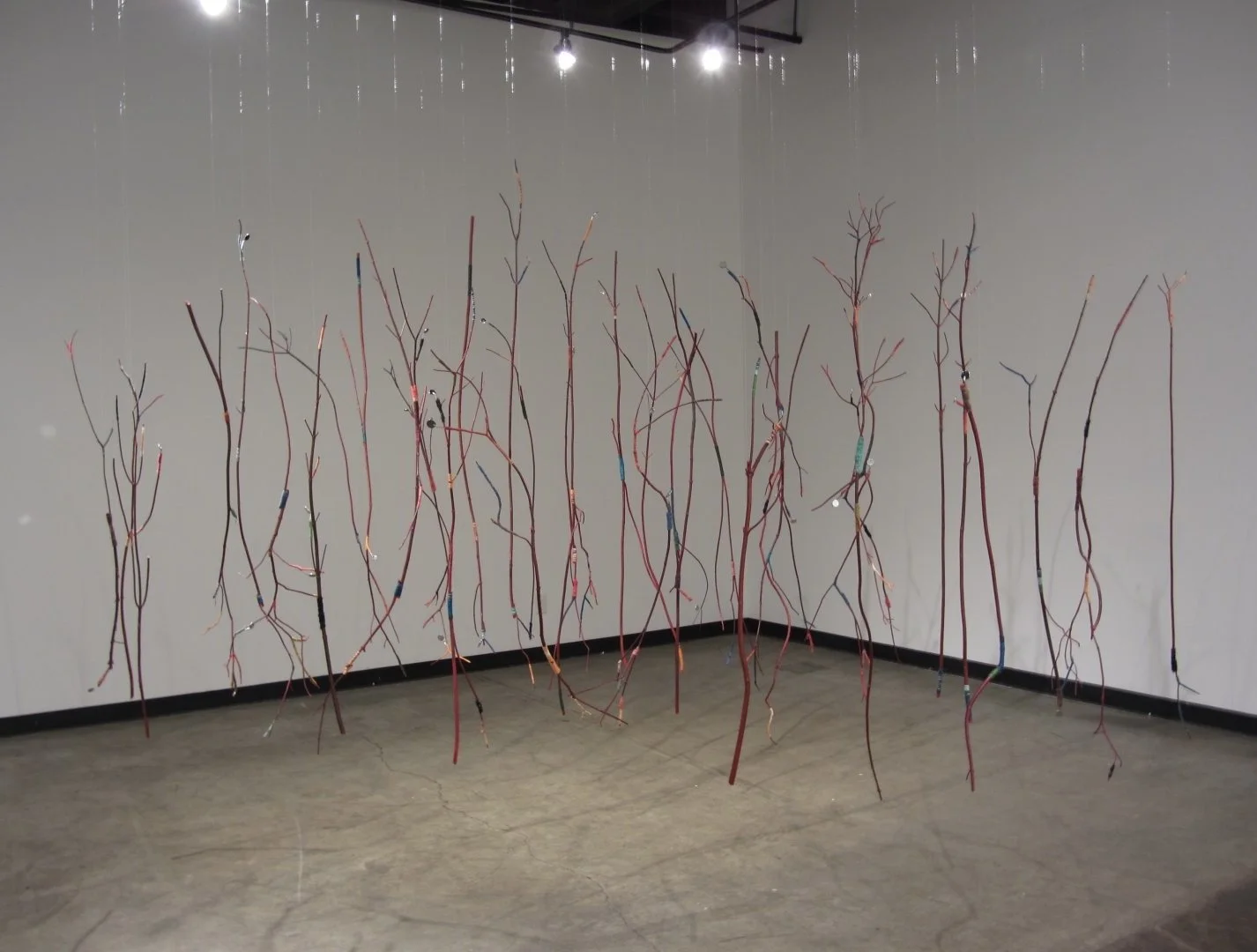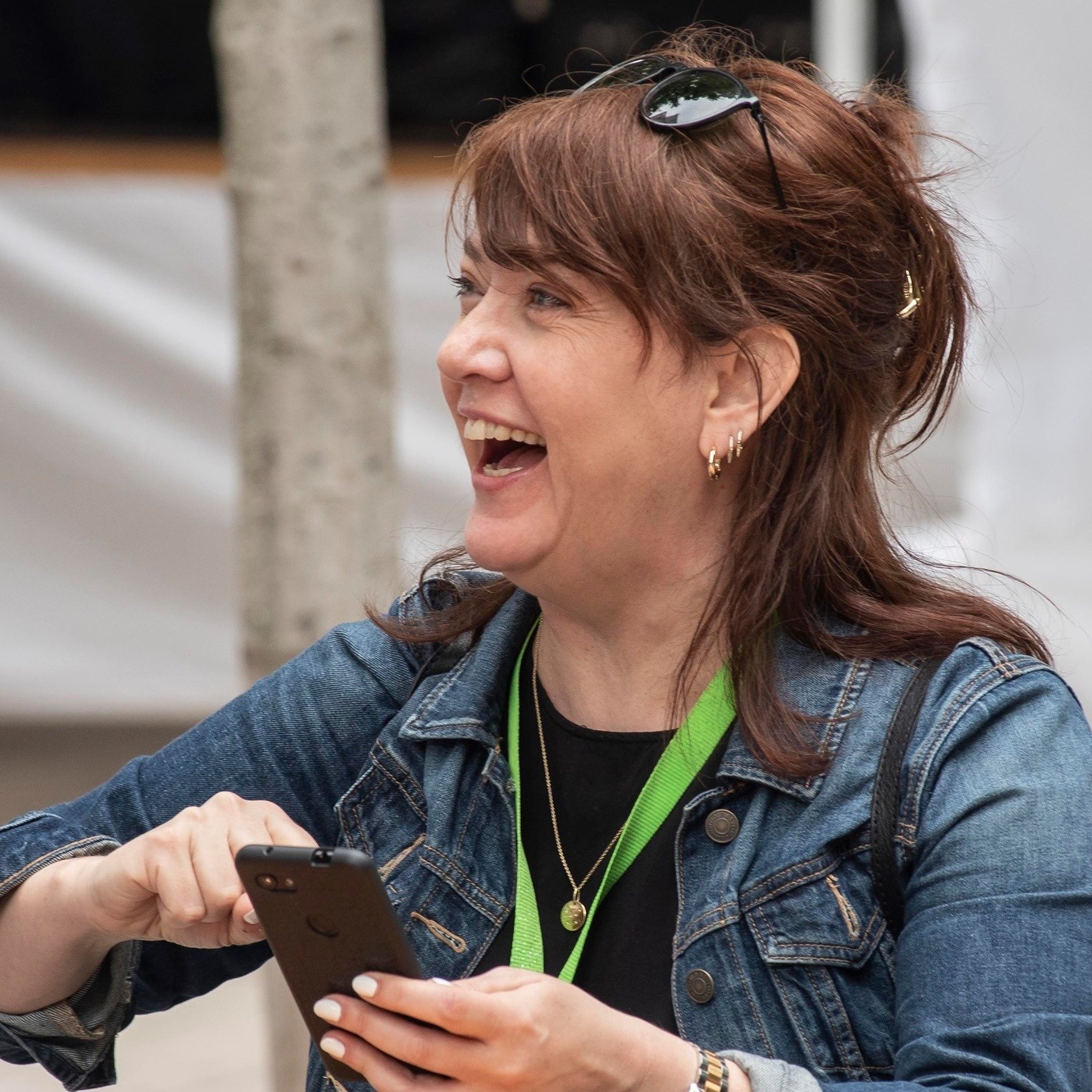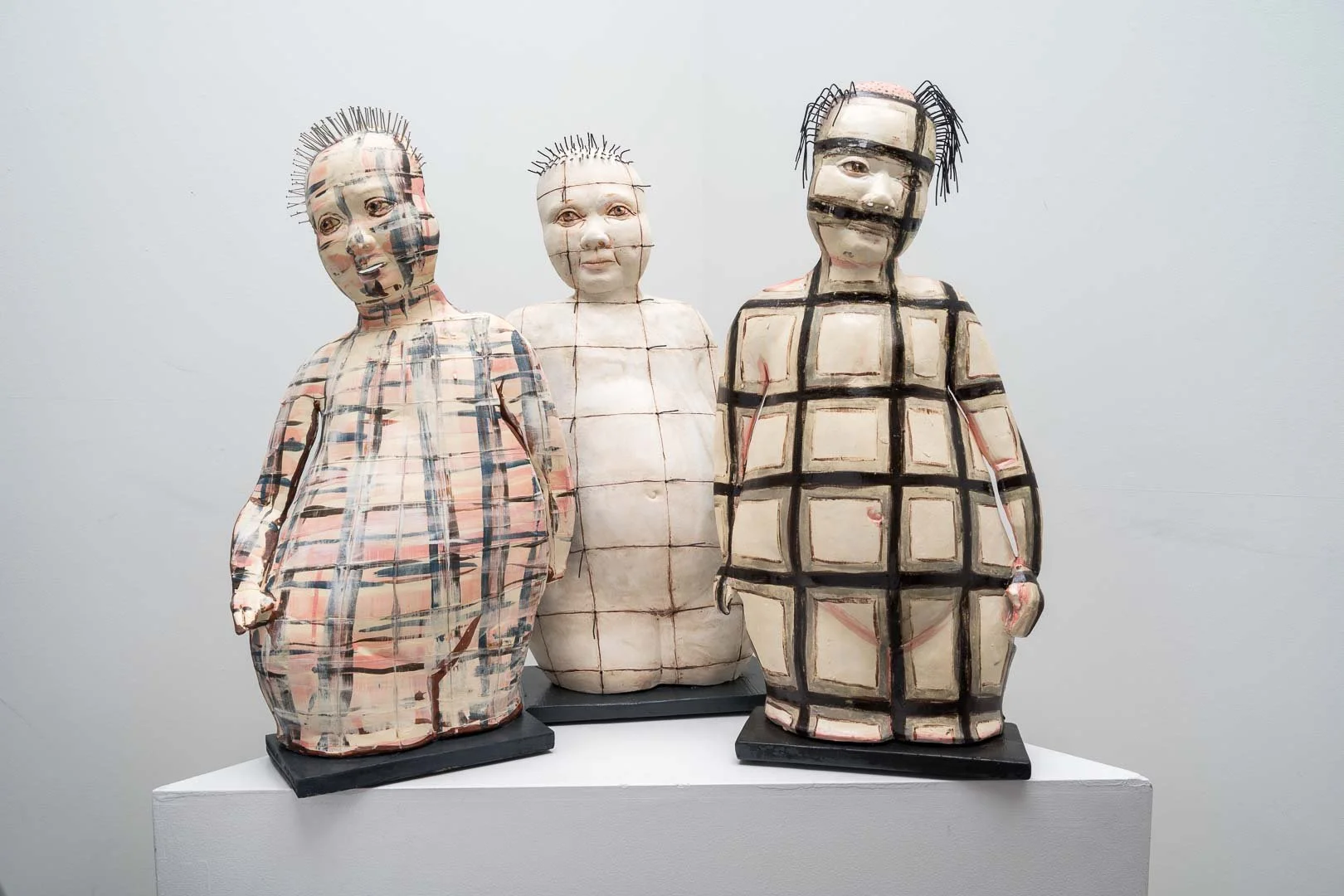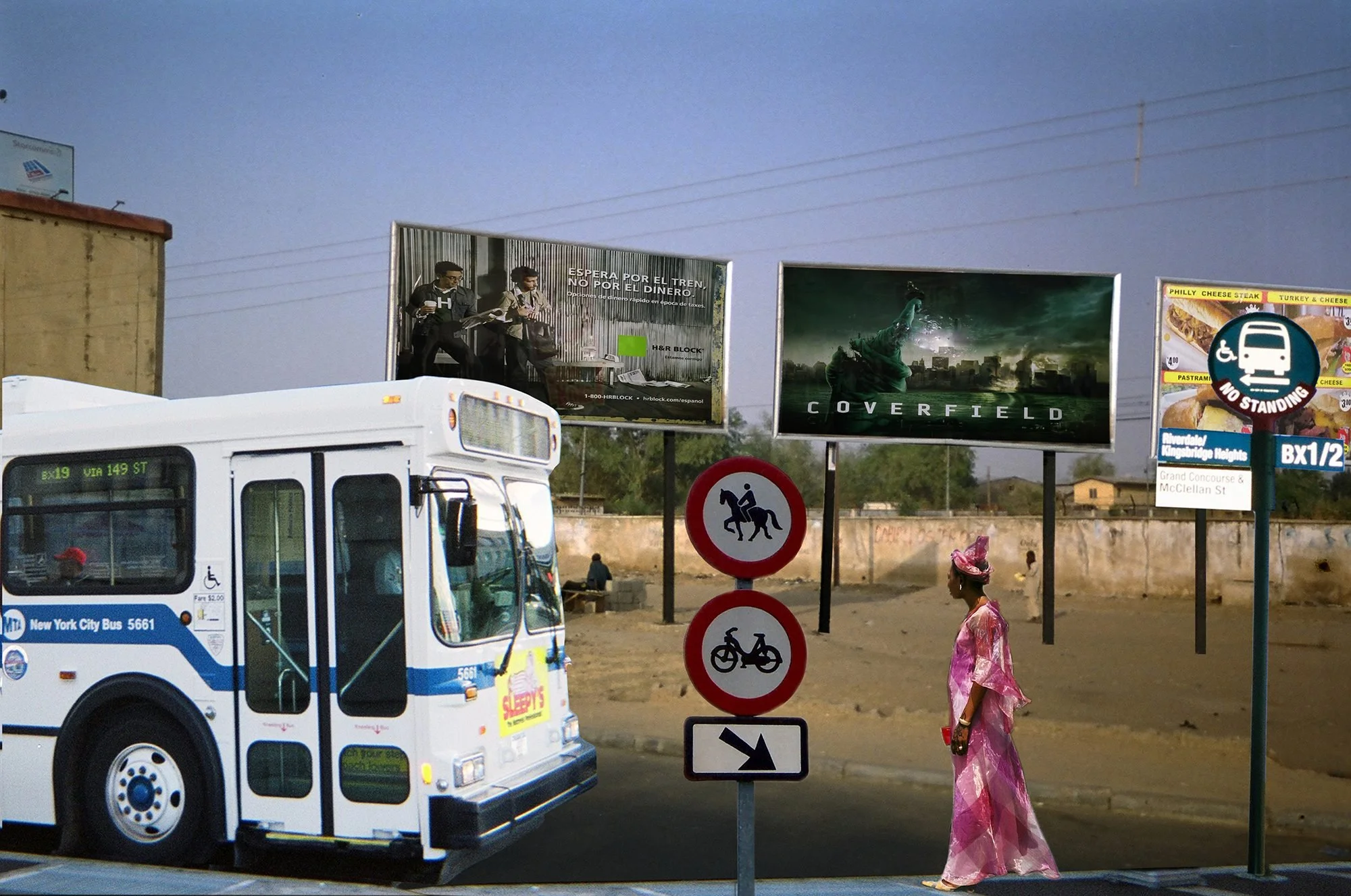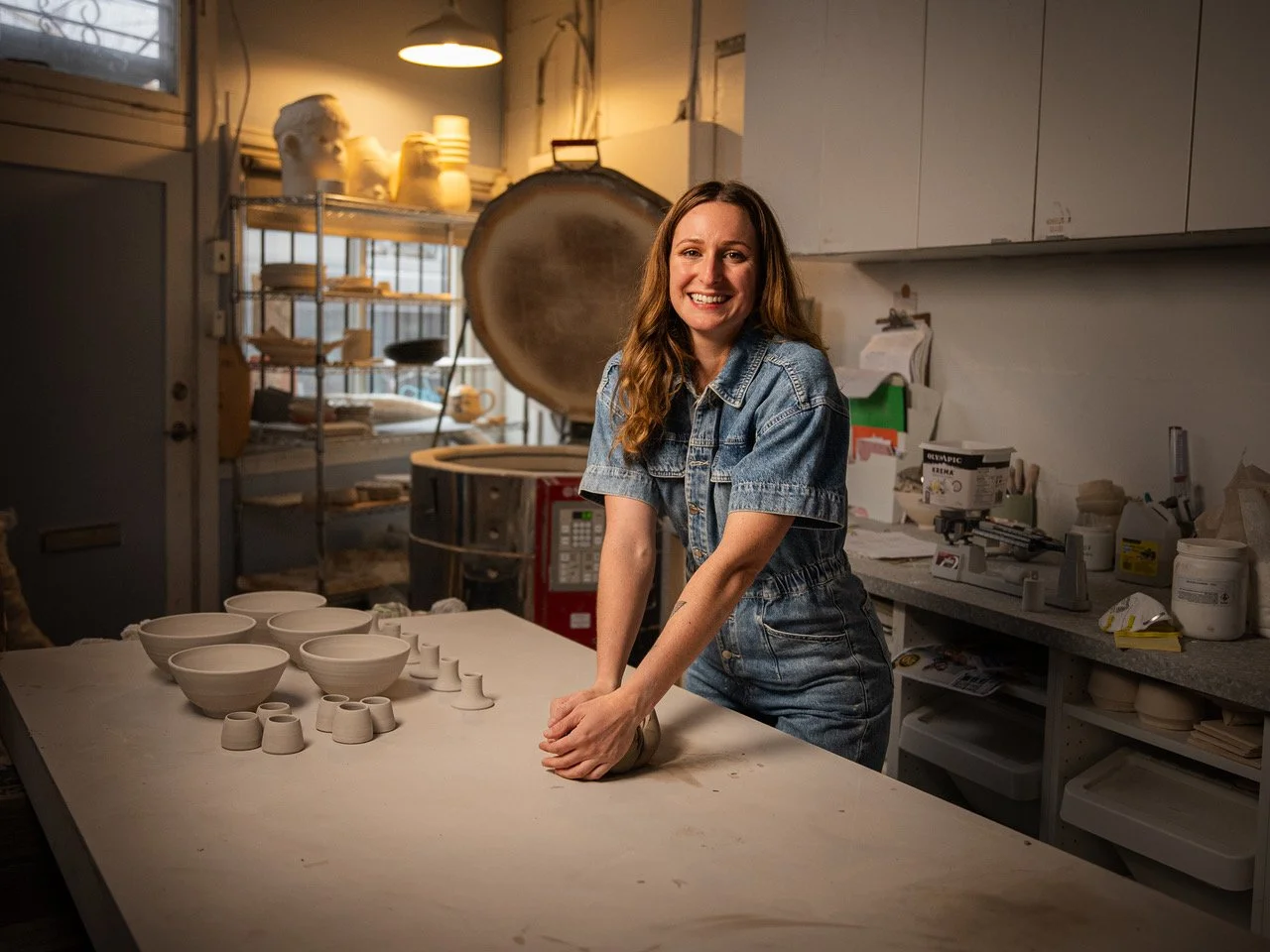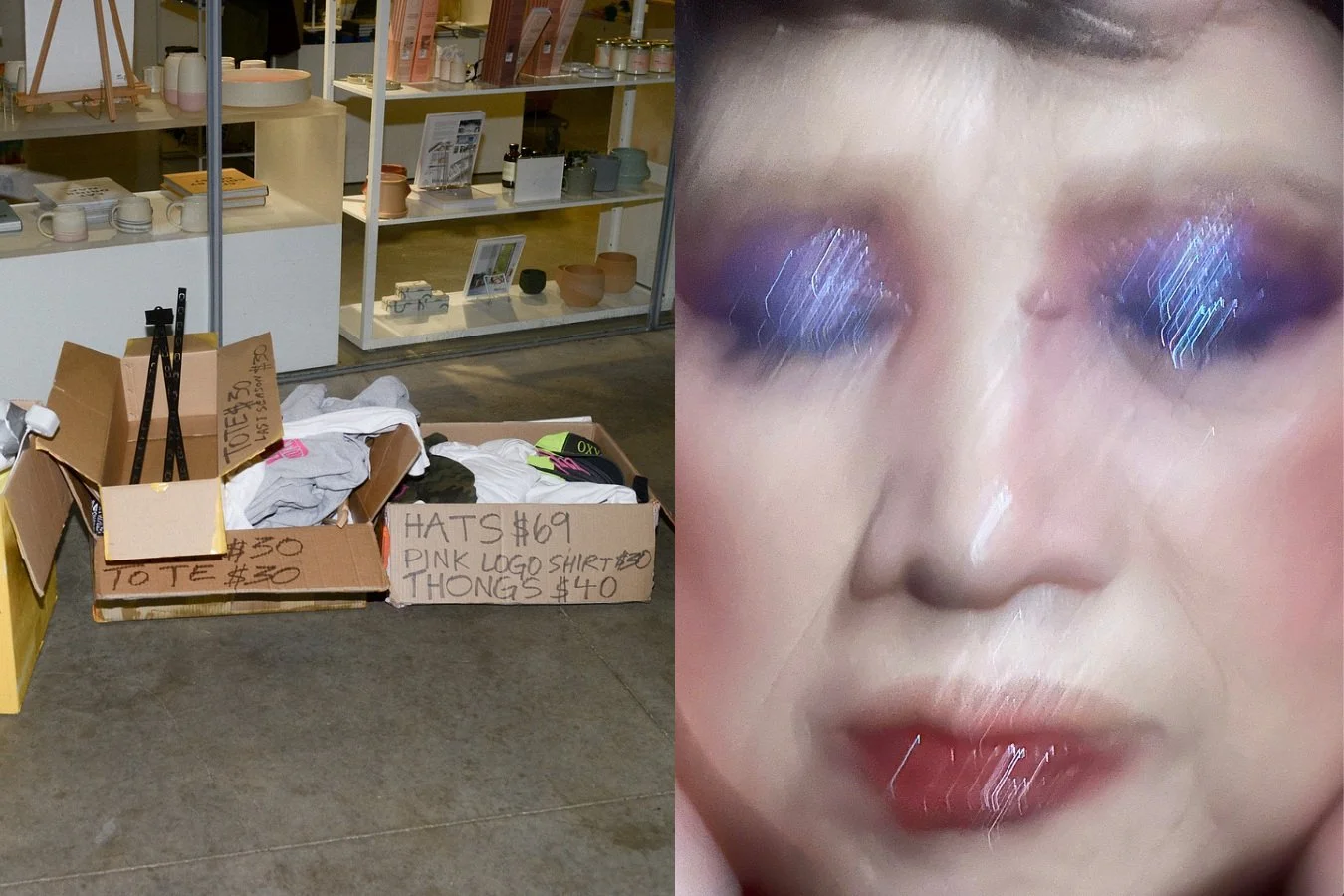The Polygon Gallery announces large-scale commissioned sculpture by Lac Seul First Nation (Anishinaabe) artist Rebecca Belmore
Hacer Memoria will be installed along the exterior of The Polygon Gallery
In-progress view of Rebecca Belmore’s Hacer Memoria (2022). Photo by Henri Robideau
THE POLYGON GALLERY, in collaboration with Burrard Arts Foundation, has announced it will unveil a large-scale commissioned sculpture by Rebecca Belmore on January 14.
Consisting of oversized blue and orange shirts made of industrial-grade tarpaulin, the highly visible public artwork, titled Hacer Memoria, will be installed along the top of the venue’s east-facing façade. Each garment will be emblazoned with a single letter that will together spell the word hereafter. Belmore was drawn to the material because of its prevalence in local urban developments on unceded Indigenous land, provisional shelters, and on Burrard Inlet wharves.
A member of Lac Seul First Nation (Anishinaabe), Belmore is an internationally recognized multidisciplinary artist. Her new work takes its title from the Pope’s penitential speech in which he recognized the importance of remembering the devastating impacts of the residential school system. Belmore has co-opted his phrase “hacer memoria”, or “try to remember”, by highlighting the challenges of not forgetting. The colours are significant: blue represents the uniforms that students wore, while orange honours the resilience of survivors. The artwork offers a chance to remember and acknowledge Indigenous people.
The kinetic installation will interact with the natural elements: swaying in the wind, for instance; shifting with pelting rainfall; and reflecting the sun.
“Rebecca Belmore’s art often references wind, water, and land, and in this new work she is responding to the site of The Polygon Gallery on unceded Indigenous territories of the Burrard Inlet,” says curator Helga Pakasaar. “The seemingly fragile shirts suggest the absence of bodies, giving a sense of erasure and vulnerability to the passage of time. Belmore’s provocative artwork reflects on how the politics of memory impacts Indigenous lives.”
Installation view of Rebecca Belmore’s Severance (2022), made of mesh tarpaulin, thread, and hair. Photo by Akeem Nermo
Hacer Memoria accompanies Severance, another installation by Belmore in The Polygon Gallery’s stairwell. Made of plastic mesh tarpaulin, the sculpture is suggestive of black hair in a reminder of the horrific history of residential schools, where Indigenous children’s hair was regularly shorn.
Belmore’s recent solo exhibitions include Turbulent Water at Griffith University in Brisbane, Australia (2021), Reservoir at the Audain Art Museum in Whistler (2019), and Facing the Monumental at Art Gallery of Ontario in Toronto (2018). She has participated in international group exhibitions, including the Whitney Biennial (2022), Istanbul Biennial (2019), and documenta 14 (2017). With a 30-year history of performance art, Belmore took part in aabaakwad, an annual Indigenous-led gathering that examines Indigenous art practices, which was part of the programming for the 59th Venice Biennale in partnership with The Sámi Pavilion earlier this year.
The fifth public art commission presented by the Polygon in collaboration with Burrard Arts Foundation, Hacer Memoria will be on display for six months.
The opening celebration of Hacer Memoria takes place on January 14 at 3 pm. It will be followed by a conversation between Belmore and curator, writer, and researcher Candice Hopkins.
See The Polygon Gallery for more information.
Rebecca Belmore in front of the in-progress work Hacer Memoria (2022). Photo by Henri Robideau



